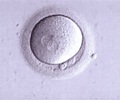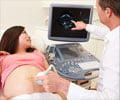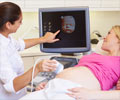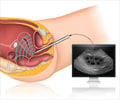The Indian girl child is still living in danger- her very own existence can be wiped off when an ultrasound scan does its job.
Activists working to prevent sex-selective killing of the female fetus insist that this technology of ultrasonography coupled with the greed of some medical professionals are the main reasons for the declining sex ratio in the country.Meanwhile, Bangalore-based V. Raja, president and chief executive officer of GE Healthcare, South Asia and Managing Director, GE-Wipro, which boasts the largest market share of ultrasound machines in India, says the company is strict in adhering to the provisions of the Pre-Conception and Pre-Natal Diagnostic Techniques (Prevention and Regulation of Misuse) Act, 2002.
The company claims it has put many safeguards to ensure that the ultrasound machines manufactured by them were not used illegally for sex selection.
“We put stickers on all our ultrasound devices which say that sex determination is an offence. Internal audits are done to ensure that both the dealer and customer are adhering to the rule of law,” he says. Yet, it is common knowledge that these measures have not been able to prevent corrupt medical practitioners from doing sex determination or dealers from selling the machines to them.
Varsha Deshpande, founder of the Dalit Mahila Vikas Mandal in Maharashtra and legal advisor to the Satara district Pre-Conception and Pre-Natal Diagnostic Techniques Act (PCPNDT) Committee, maintains that despite non-registration, doctors in her State, especially in the prosperous belt of Satara, Kolhapur and Navi Mumbai, are using ultrasound machines to detect the sex of the fetus.
The Act, which came into force in 1996, bans the use of pre-natal diagnostic techniques, including ultrasound machines, to identify female fetuses and then abort them.
Advertisement
According to Puneet Bedi, a senior gynecologist from Delhi, ultrasound machines were promoted by manufacturing companies, as a necessary tool in prenatal care even though it has been found that ultrasound has no role to play in routine pregnancy. “Needs are being created to promote this kind of technology,” he opines.
Advertisement
Ultrasonography has become a widely used diagnostic tool in obstetrics. During pregnancy, fetal development and female pelvic organs can be observed with an ultrasound device. Fetal heart movements can be assessed and measurements can be made accurately with the help of the pregnancy ultrasound. Such measurements are vital in assessing the gestational age, size and growth of the fetus.
The ultrasound machine works by transmitting high frequency sound waves. An image is formed when these sound waves rebound from the body structure. The image is itself an echo of the sound wave transmitted by the ultrasound machine. The echo that bounces back helps to identify where the object is located, how big it is, it's shape and whether it's internal consistency is liquid, solid or both. The echo takes longer to return if the object is far away and is heard sooner if the object is close by.
A picture is reproduced on the computer screen, converting the sound waves by measuring them at once.
Standard ultrasound is routinely conducted on most pregnant women to evaluate the growth and development of the baby as well as identify a multiple pregnancy. Advanced ultrasound is useful in tracing any suspected problem.
Pregnancy ultrasound is non-invasive and does not entail exposure to x-ray radiation. The main disadvantage arises when unscrupulous persons use it to determine fetus gender and then plan its death based on the image.
Source-Medindia
ANN/V











